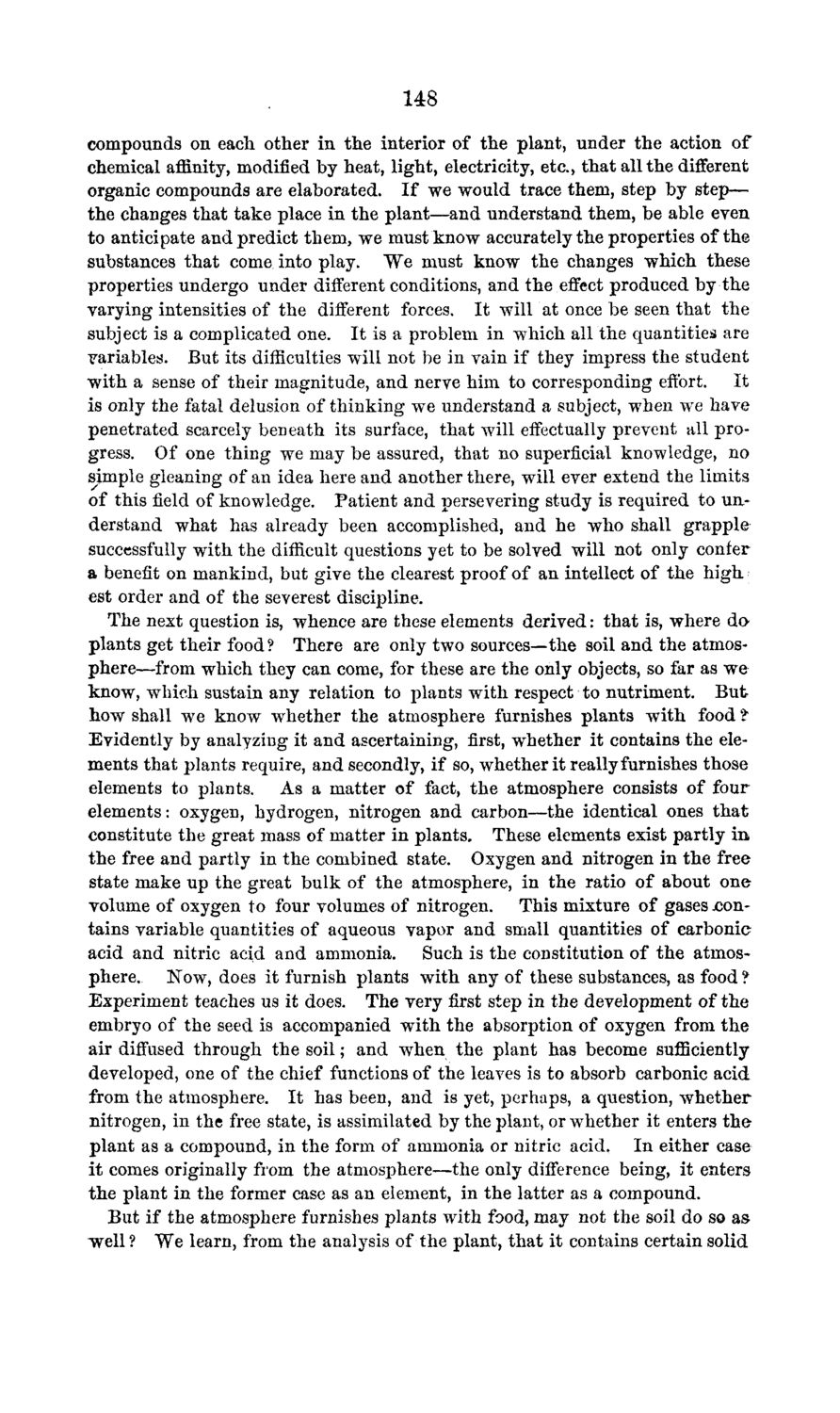| |
| |
Caption: Board of Trustees Minutes - 1869
This is a reduced-resolution page image for fast online browsing.

EXTRACTED TEXT FROM PAGE:
148 compounds on each other in the interior of the plant, under the action of chemical affinity, modified by heat, light, electricity, etc., that all the different organic compounds are elaborated. If we would trace them, step by step— the changes that take place in the plant—and understand them, be able even to anticipate and predict them, we must know accurately the properties of the substances that come into play. We must know the changes which these properties undergo under different conditions, and the effect produced by the varying intensities of the different forces. It will at once be seen that the subject is a complicated one. It is a problem in which all the quantities are variables. But its difficulties will not be in vain if they impress the student with a sense of their magnitude, and nerve him to corresponding effort. It is only the fatal delusion of thinking wTe understand a subject, when we have penetrated scarcely beneath its surface, that will effectually prevent all progress. Of one thing we may be assured, that no superficial knowledge, no simple gleaning of an idea here and another there, will ever extend the limits of this field of knowledge. Patient and persevering study is required to understand what has already been accomplished, and he who shall grapple successfully with the difficult questions yet to be solved will not only confer a benefit on mankind, but give the clearest proof of an intellect of the high est order and of the severest discipline. The next question is, whence are these elements derived: that is, where doplants get their food ? There are only two sources—the soil and the atmosphere—from which they can come, for these are the only objects, so far as we know, which sustain any relation to plants with respect to nutriment. But how shall we know whether the atmosphere furnishes plants with food ? Evidently by analyzing it and ascertaining, first, whether it contains the elements that plants require, and secondly, if so, whether it really furnishes those elements to plants. As a matter of fact, the atmosphere consists of four elements: oxygen, hydrogen, nitrogen and carbon—the identical ones that constitute the great mass of matter in plants. These elements exist partly in the free and partly in the combined state. Oxygen and nitrogen in the free state make up the great bulk of the atmosphere, in the ratio of about one volume of oxygen to four volumes of nitrogen. This mixture of gases jcontains variable quantities of aqueous vapor and small quantities of carbonic acid and nitric acid and ammonia. Such is the constitution of the atmosphere. Now, does it furnish plants with any of these substances, as food t Experiment teaches us it does. The very first step in the development of the embryo of the seed is accompanied with the absorption of oxygen from the air diffused through the soil; and when the plant has become sufficiently developed, one of the chief functions of the leaves is to absorb carbonic acid from the atmosphere. It has been, and is yet, perhaps, a question, whether nitrogen, in the free state, is assimilated by the plant, or whether it enters the plant as a compound, in the form of ammonia or nitric acid. In either case it comes originally from the atmosphere—the only difference being, it enters the plant in the former case as an element, in the latter as a compound. But if the atmosphere furnishes plants with food, may not the soil do so asivell? We learn, from the analysis of the plant, that it contains certain solid
| |